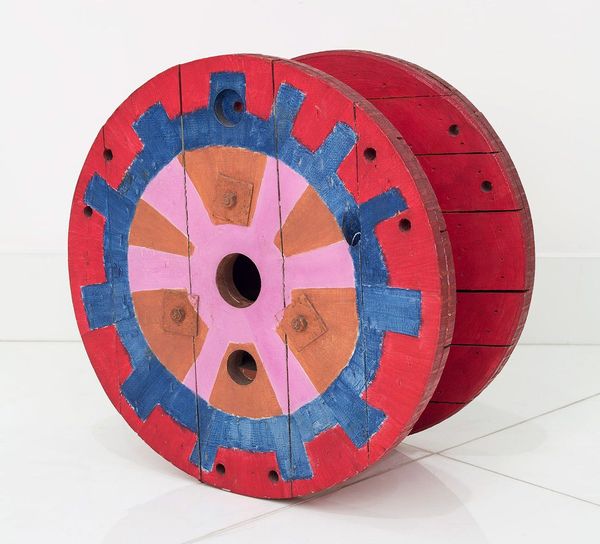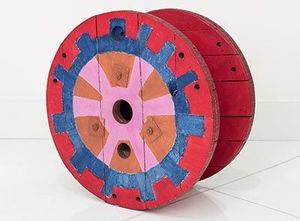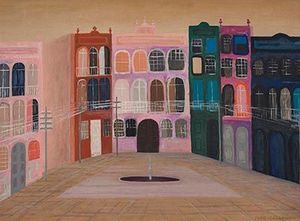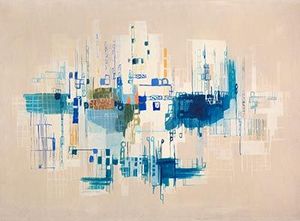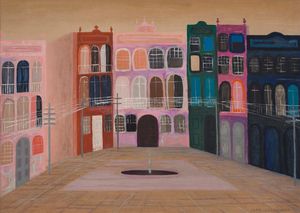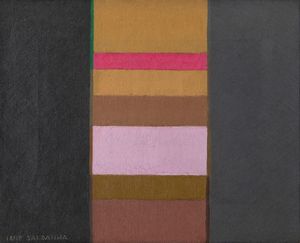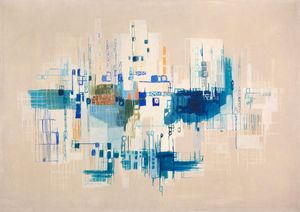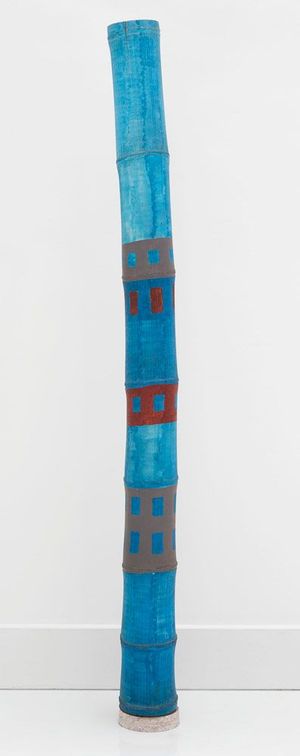Ione Saldanha first started producing paintings at the turn of the 1940s and 1950s. After moving with her family to Rio de Janeiro, she began to attend workshops in life drawing and painting, as well as the studios of Rio de Janeiro-based artists and, above all, the Museu Nacional de Belas Artes [National Museum of Fine Arts] and art salons. In this early period of her work, the most frequent motifs in the paintings were houses and urban landscapes, such as the two canvases depicting Ouro Preto that the artist presented at the 53rd Fine Arts Salon in 1948, which won her a bronze medal on the very first occasion she exhibited her work. In 1949, Saldanha made her first study visit to Europe. She stayed in Paris for two years to study the fresco technique at the Académie Julian, a place where many modernist artists from Brazil circulated after the Second World War. It was in this context that Saldanha met Maria Helena Vieira da Silva (1909-1992).
On her return from Europe, the artist’s work gradually took on more abstract and geometric traits, tending towards verticality, during the 1950s. Ione Saldanha's façade paintings mix traditional compositional elements of these motifs with small geometric patterns whose rhythm is given by the piling up of squares, rectangles and triangles. Towards the end of this decade, the painting referred to skylines. In subdued tones, the geometric forms are painted on neutral backgrounds (white or grey) to form a horizon line that splits the picture plane in two. In the upper and lower parts, the regulated piling up of geometric forms suggests an imaginary architecture, usually without perspective and whose brushstrokes are reminiscent of the fresco technique, even though they are oil or acrylic paintings.
Early in the following decade, the painter dedicated herself to a body of work entitled Cidades Inventadas, in which the forms of urban elevations, split into two upper and lower planes, gained perspective and volume. Her palette also became darker and more vibrant. The chromatic work also explores stains of color that are not reduced to the solid contours of the figures and often create other forms in the pictorial space. In some cases, it is the proliferation of these stains that act as outlines, giving the painting a watercolor appearance, since the stains and the figure are intertwined.
This is the gradual process of color becoming autonomous, which will be characteristic of Saldanha's work from the mid-1960s onwards. Still on canvas, the painting of geometric forms becomes detached from the direct reference to the city and the shapes take on greater dimensions. The painting becomes structured by vertical columns of color painted in the center of the canvas and, in some cases, there are circles. The canvases still show the brushstrokes that give texture to the monochrome spaces inside the shapes, which become lighter and have less defined outlines.
The verticalization of monochromatic spaces anticipated the later phase of her painting, which gradually used formal simplification to explore colors and their relationships in other media. In Saldanha’s own words: “I want to do the minimum with the minimum of material, just a little wooden slat and that's it, that's all,” as stated in an interview with Eventual in 1996. In 1968, Saldanha began painting on wooden slats, using a pictorial procedure similar to that of the canvases from the end of that decade: the construction of verticals of colors without volume. It's as if each slat illustrates a section of Saldanha's palette. The procedure aims to build chromatic rhythms through the interaction of colors: full and empty spaces, warm and cold hues, complementary and dissonant colors, and so on. The work also emphasizes the brushstroke, this time using tempera. At the same time, the artist began a series of paintings on bamboo, in which volume began to enter the painting in a pictorial space without perspective.
From the 1970s to the 1990s, Ione Saldanha continued her research into painting on wood, slats and bamboo, and began to include wooden cable spools among her materials. The circular shape of this object would reappear in her work, as in the paintings on Italian paper in the Roda Flor series. In the Empilhados series, Saldanha takes up and reworks the procedure of her 1960s painting: the vertical compositional ordering of colors, this time by piling up solid geometric shapes. Ione Saldanha featured in several editions of Bienal de São Paulo (1953, 1955, 1957, 1959, 1961, 1963, 1965, 1967 and 1969). In 1969, at the 10th edition, Saldanha was awarded a prize from the international jury. For this reason, she was honored in the 12th and 15th editions, in 1973 and 1979 respectively. In 1956, Saldanha had her first solo show at the Museu de Arte Moderna de São Paulo – MAM SP. Just five years later, she had her first international solo show at the Casa do Brasil Gallery at the Brazilian Embassy in Rome. The artist was featured in the 1st Panorama de Arte Atual Brasileira at the MAM-SP. After her death, Saldanha's work continues to feature in various exhibitions, including, in a solo show at the Paço Imperial in Rio de Janeiro; in 2021, Museu de Arte de São Paulo Assis Chateaubriand - MASP revisited her work with the exhibition Ione Saldanha: a cidade inventada (Ione Saldanha: the Invented City). Her work is part of major collections in Brazil and abroad, such as: Museu de Arte Moderna do Rio de Janeiro – MAM Rio; MAM-SP; MASP; Pinacoteca de São Paulo; Museu de Arte Contemporânea da Universidade de São Paulo – MAC USP; Museu de Arte do Rio de Janeiro - MAR and The Museum of Fine Arts Houston - MFAH, USA.
